Is There a Right Way to Empty Bowels?
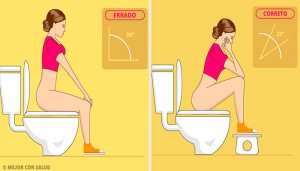
Historically, humans, like other mammals, squatted in order to rest, work and empty bowels. But how does the toilet cater for physiological needs?
In this article, we explain how the toilet has facilitated the action of emptying your bowels and give you some tips on how to do it properly.
The toilet: a “luxury” object
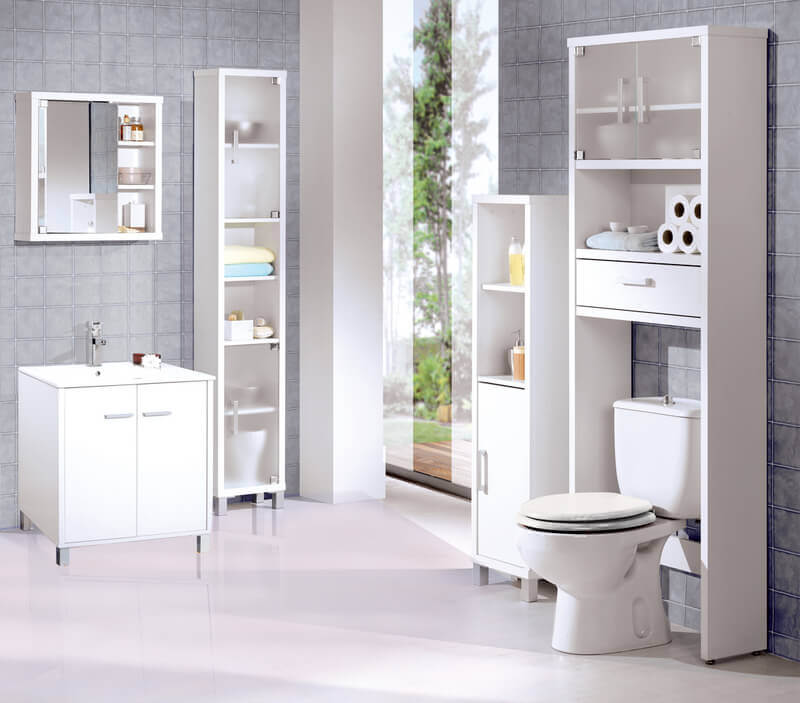
Bathroom habits changed forever ever since Sir John Harington invented the toilet in 1591. At first, it was considered to be a “luxury” object. Not everyone had access to a toilet– only royalty. However, it was also accessible for the handicapped, but only in rare cases.
As plumbing developed, the toilet became mass produced, giving common people the same “privileges” that were once reserved for the wealthy. Thus, the use of the toilet modified the habit of squatting and, consequently, the way we emptied our bowels changed.
Get to know: Why Is It Bad to Fight the Urge to Go to the Bathroom?
Scientific arguments: squatting is better
In his 1964 book Gastroenterology (which evolved into the journal), Dr. Henry L. Bockus concluded that squatting with the thighs pressed against the abdomen was the necessary position for ideal defecation.
Similarly, Dr. Alexander Kira argued in his 1966 book The Bathroom that human nature requires squatting to answer nature’s calls because it reduces the effort needed to defecate.
Furthermore, in 2003, Dr. Dov Sikirov published a study that compared the applied forces of sitting down and squatting during defecation. It found that the squatting position produced a feeling of a satisfying bowel movement. On the other hand, the sitting position required an excessive pushing effort and more time compared to the squatting position.
What happens when we empty our bowels?
The term “defecation” can be defined as the process through which the final product of digestion is eliminated. During this process, the enteric nervous system and the parasympathetic system allow several actions to take place, e.g. controlling the accumulation of fecal material in the colon.
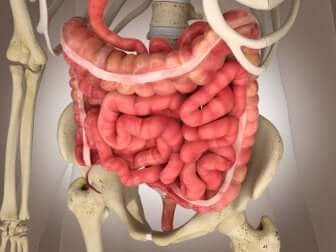
At the same time, the relaxation of the external sphincter and puborectalis muscle occurs and this allows for rectal alignment in order to create intra-abdominal pressure, thus ejecting the waste.
In the following link, you can read about: 4 Tips to Alleviate Irritable Bowel Syndrome
Squatting
It’s important to point out that in order to go to the bathroom in a squatting position, your legs need to be at a 22.5º angle in respect to your body. By doing so, your muscles press against your abdomen.
According to the following study published by experts from the Urology Department of Japan, this action creates pressure in the interior cavities of the colon, freeing and aligning the anal canal, which facilitates elimination. This results in faster, easier and more thorough bowel movements.
Sitting down
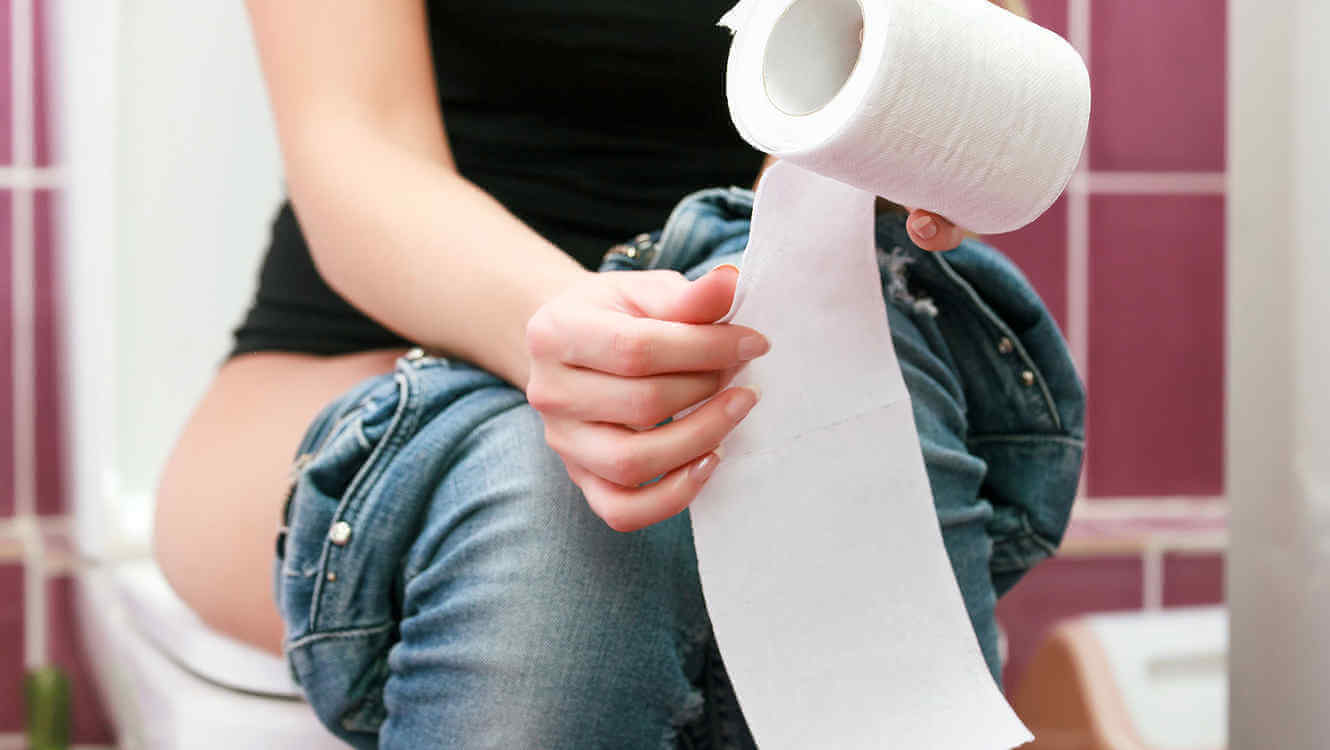
When sitting rather than squatting, the opposite occurs. In this position, the legs are at a 90º angle to the abdomen pressing against the muscles, so alignment between the rectum and anus does not occur.
The American Society of Colon and Rectal Surgeons indicates that this position causes several problems and diseases; such as constipation, irritable bowel syndrome, hernias and hemorrhoids.
The benefits of adopting the squatting position when using the bathroom
This position:
- Allows for quicker and easier elimination of feces.
- Prevents material from passing through between the colon and small intestine. This reduces the possibilities of contaminating the small intestine.
- Prevents tension in the area, which prevents hernias, diverticulosis, and other problems.
- Forms part of a non-invasive treatment for hemorrhoids.
- In the cases of pregnant women, this position prevents pressure on the uterus.
- Prevents fecal build-up. This condition is one of the main factors in appendicitis and inflammatory bowel disease.
It’s important to mention that the 90° angle bathroom position has been associated with colorectal cancer (CRC). However, that hypothesis was shown to still be inconclusive in a study by Sahand Sohrabi.
How can I apply this information?
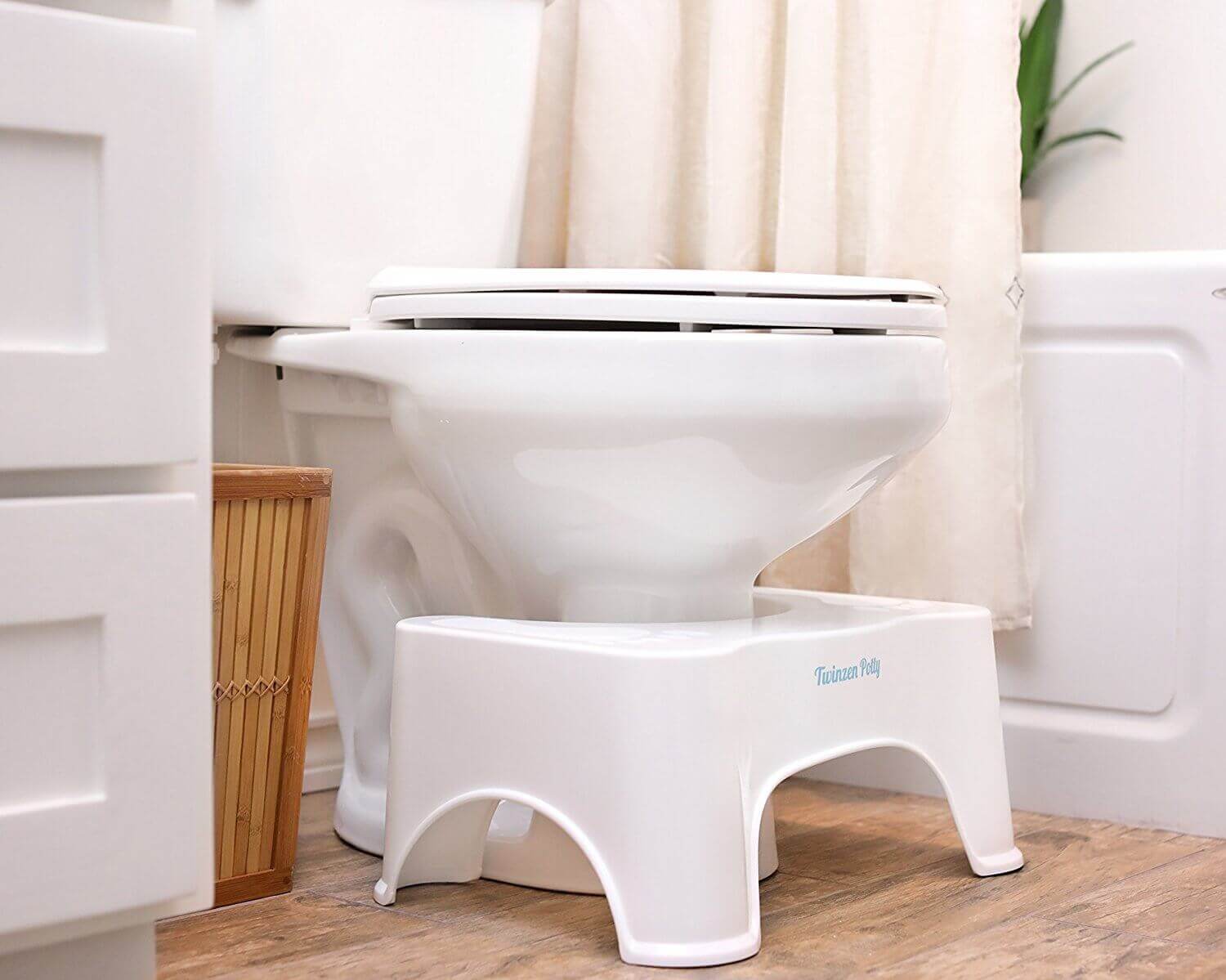
In the world of bathroom furniture design, there aren’t many initiatives that consider the squatting position. However, we can adapt our toilet by using a footstool. It doesn’t need to be a specific height, but it does need to be tall enough so that we can position ourselves at a 22.5º angle.
Some people opt for stepping onto the toilet to get into position. However, doing so could be dangerous as the toilet could break or the person could fall. It’s definitely not advisable.
Tips for better bowel movements
As you have seen, studies support the importance of adopting a good bowel movement position.
Acquiring this habit will provide a series of health benefits; such as eliminating stool quickly and easily, or preventing the leakage of matter between the colon and the small intestine. How about you? Do you dare to try it?
All cited sources were thoroughly reviewed by our team to ensure their quality, reliability, currency, and validity. The bibliography of this article was considered reliable and of academic or scientific accuracy.
- Fraca Padilla, M., Muñoz-Navas, M., & Rey Díaz-Rubio, E. (2013). DIAGNÓSTICO Y TRATAMIENTO DEL ESTREÑIMIENTO DURANTE EL EMBARAZO. Sociedad Española de Ginecología y Obstetricia.
- Cerdán Miguel, J., Cerdán, C., & Jiménez, F. (2005). Anatomofisiología de la continencia y la defecación. Cirugia Espanola. https://doi.org/10.1016/S0009-739X(05)74637-6
- García-Armengol, J., Moro, D., Ruiz, M. D., Alós, R., Solana, A., & Roig-Vila, J. V. (2005). Defecación obstructiva. Métodos diagnósticos y tratamiento. Cirugia Espanola. https://doi.org/10.1016/s0009-739x(05)74645-5
- Sir John Harington. Encyclopædia Britannica. https://www.britannica.com/biography/John-Harington.
- Sikirov D. Comparison of straining during defecation in three positions: results and implications for human health. Dig Dis Sci. 2003;48(7):1201-1205. doi:10.1023/a:1024180319005.
- Sakakibara R, Tsunoyama K, Hosoi H, et al. Influence of Body Position on Defecation in Humans. Low Urin Tract Symptoms. 2010;2(1):16-21. doi:10.1111/j.1757-5672.2009.00057.x.
- Sugerman DT. Hemorroides. JAMA 2014; 312 (24): 2698. doi: 10.1001 / jama.2014.281.
This text is provided for informational purposes only and does not replace consultation with a professional. If in doubt, consult your specialist.








